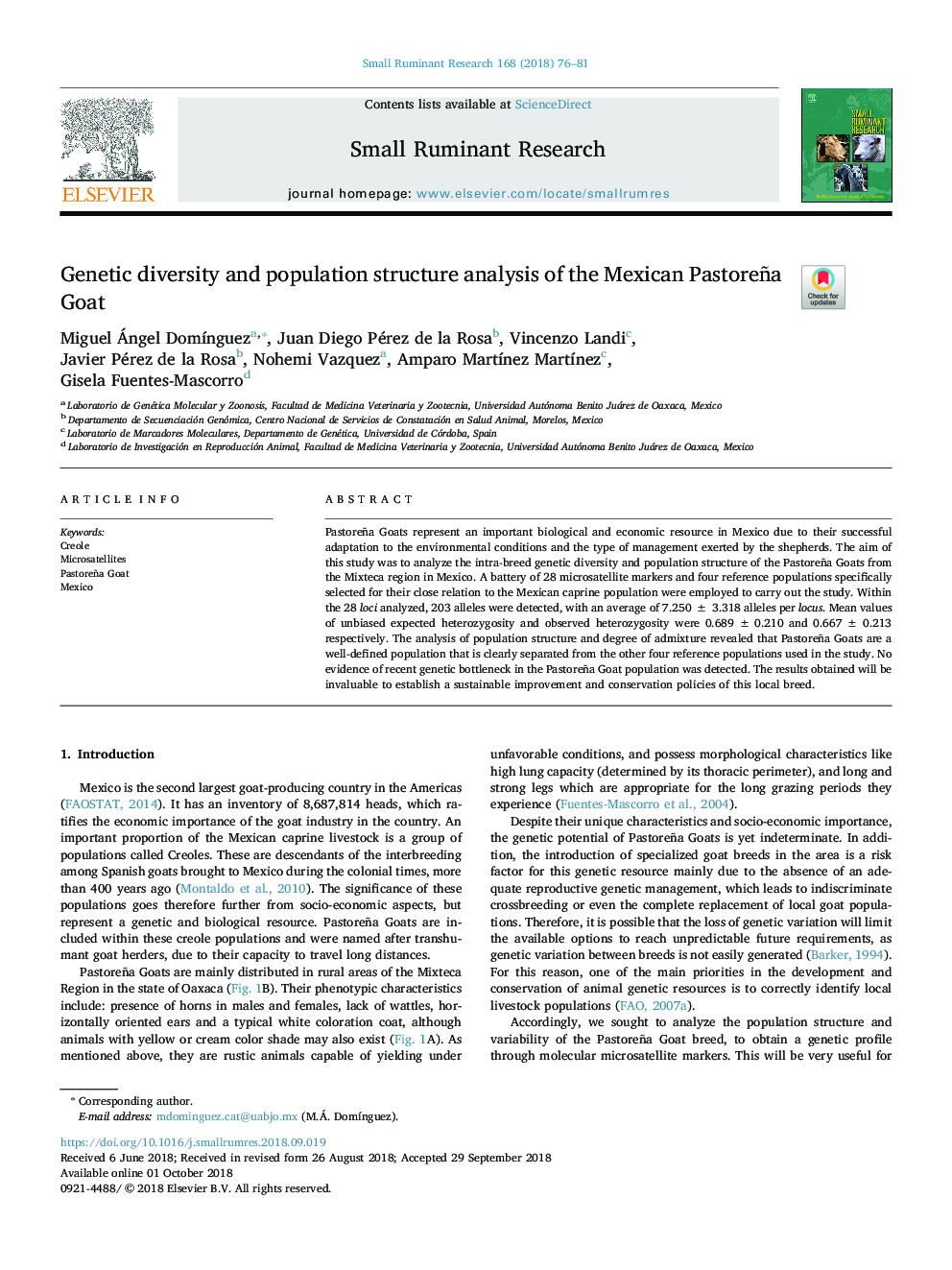| Article ID | Journal | Published Year | Pages | File Type |
|---|---|---|---|---|
| 11025837 | Small Ruminant Research | 2018 | 6 Pages |
Abstract
Pastoreña Goats represent an important biological and economic resource in Mexico due to their successful adaptation to the environmental conditions and the type of management exerted by the shepherds. The aim of this study was to analyze the intra-breed genetic diversity and population structure of the Pastoreña Goats from the Mixteca region in Mexico. A battery of 28 microsatellite markers and four reference populations specifically selected for their close relation to the Mexican caprine population were employed to carry out the study. Within the 28 loci analyzed, 203 alleles were detected, with an average of 7.250â±â3.318 alleles per locus. Mean values of unbiased expected heterozygosity and observed heterozygosity were 0.689â±â0.210 and 0.667â±â0.213 respectively. The analysis of population structure and degree of admixture revealed that Pastoreña Goats are a well-defined population that is clearly separated from the other four reference populations used in the study. No evidence of recent genetic bottleneck in the Pastoreña Goat population was detected. The results obtained will be invaluable to establish a sustainable improvement and conservation policies of this local breed.
Keywords
Related Topics
Life Sciences
Agricultural and Biological Sciences
Animal Science and Zoology
Authors
Miguel Ángel DomÃnguez, Juan Diego Pérez de la Rosa, Vincenzo Landi, Javier Pérez de la Rosa, Nohemi Vazquez, Amparo MartÃnez MartÃnez, Gisela Fuentes-Mascorro,
